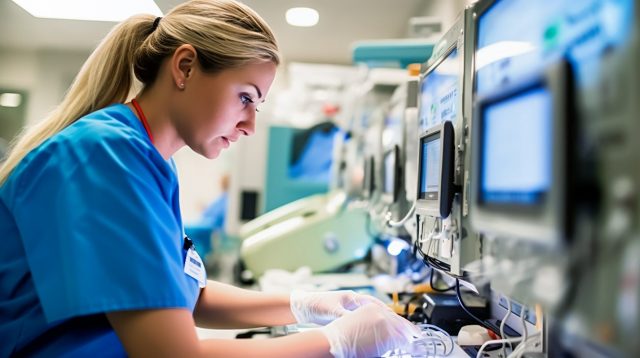In the realm of healthcare, Artificial Intelligence (AI) is playing an increasingly pivotal role as time passes, especially in the development and optimization of medical devices. From diagnostic tools that detect diseases with astonishing accuracy to intelligent systems that provide personalized treatment plans, AI’s integration into medical technology is not just enhancing clinical practices; it is transforming them. Bahram Alavi delves into the various ways AI is being harnessed within medical devices to improve diagnostics, treatment planning, and patient outcomes.
Enhancing Diagnostic Accuracy with AI
One of the most significant contributions of AI for medical devices is in the field of diagnostics. Bahram Alavi emphasizes that traditional diagnostic processes tend to be complex, time-consuming, and subject to human error. AI, however, can analyze immense amounts of medical data, including images and test results, more quickly and with greater precision than human practitioners. For example, AI-powered imaging tools use algorithms to detect abnormalities such as tumors, fractures, or signs of neurological disorders from MRI, CT scans, or X-rays, often with higher accuracy than radiologists. Research has shown that AI can detect diseases such as pneumonia from X-ray images more accurately than experienced radiologists. Bahram Alavi explains that this capability not only speeds up the diagnostic process, but also enhances accuracy, leading to earlier and more effective interventions. AI’s role in diagnostics also extends to the realm of laboratory medicine. Devices equipped with AI algorithms can analyze blood samples and detect biomarkers of diseases like cancer or diabetes much earlier than conventional methods. Bahram Alavi notes that these advancements are crucial for identifying the presence of diseases, where early detection improves prognosis and treatment success.
Streamlining Treatment Planning
Beyond diagnostics, AI is also revolutionizing treatment planning. In oncology, AI-powered devices are being used to plan radiation therapy with a level of precision that had previously been deemed unachievable. Bahram Alavi explains that these systems analyze medical images to model the tumor’s shape and predict its growth patterns. This information allows clinicians to design treatment plans that maximize the dose to the tumor while minimizing exposure to healthy tissues, thus improving treatment effectiveness and reducing side effects. In surgery, AI-driven robotic devices assist surgeons by providing real-time data analysis, guidance, and control, making procedures less invasive and more precise. For example, in orthopedic surgery, robots can help plan the placement of implants and assist in executing the surgical plan with high precision, which is critical for the success of the surgery and the speed of recovery.
Improving Patient Monitoring and Management
AI is also transforming patient monitoring and management, particularly for chronic conditions such as diabetes and heart disease. Wearable devices equipped with AI algorithms can monitor vital signs, blood glucose levels, and other physiological data in real-time. These devices analyze this data in order to predict and alert patients and doctors about potential health issues before they become critical, thereby enabling timely interventions. Bahram Alavi explains that AI in wearable tech integrates behavioral and environmental data to provide personalized recommendations for lifestyle adjustments or medication changes. This not only helps in managing the illness itself, but also empowers patients to take charge of their health, improving overall quality of life.
Challenges and Ethical Considerations
Despite its many benefits, the integration of AI into medical devices is not without challenges. Issues of data privacy, security, and the need for robust regulatory frameworks are of the most concern. The reliance on AI also raises ethical questions about the reduction in human oversight, the potential for bias in AI algorithms, and the implications for patient consent and autonomy. Bahram Alavi explains that regulatory bodies are actively working to address these concerns by establishing guidelines for the development and use of AI in medical devices, ensuring that they meet safety and efficacy standards before they reach the market.
Future Prospects
Looking ahead, the potential of AI in medical devices is vast. Innovations continue to emerge, promising even more groundbreaking applications. AI could lead to the development of ‘smart’ prosthetics that adapt to the user’s movements and environments, more sophisticated biosensors for disease monitoring, and AI-driven genetic analysis tools that further personalize medicine to an unprecedented degree.
The integration of AI into medical devices represents a significant leap forward in medical technology. Bahram Alavi emphasizes that by enhancing diagnostics, streamlining treatment plans, and improving patient monitoring, AI is setting the stage for a healthcare revolution. With proper regulation and ethical considerations, this technology has the potential to improve patient outcomes and reshape the future of medicine dramatically. Bahram Alavi believes that as AI continues to evolve, its integration into medical devices will undoubtedly continue to be a critical area of research and development in the quest to achieve the highest standards of patient care.








